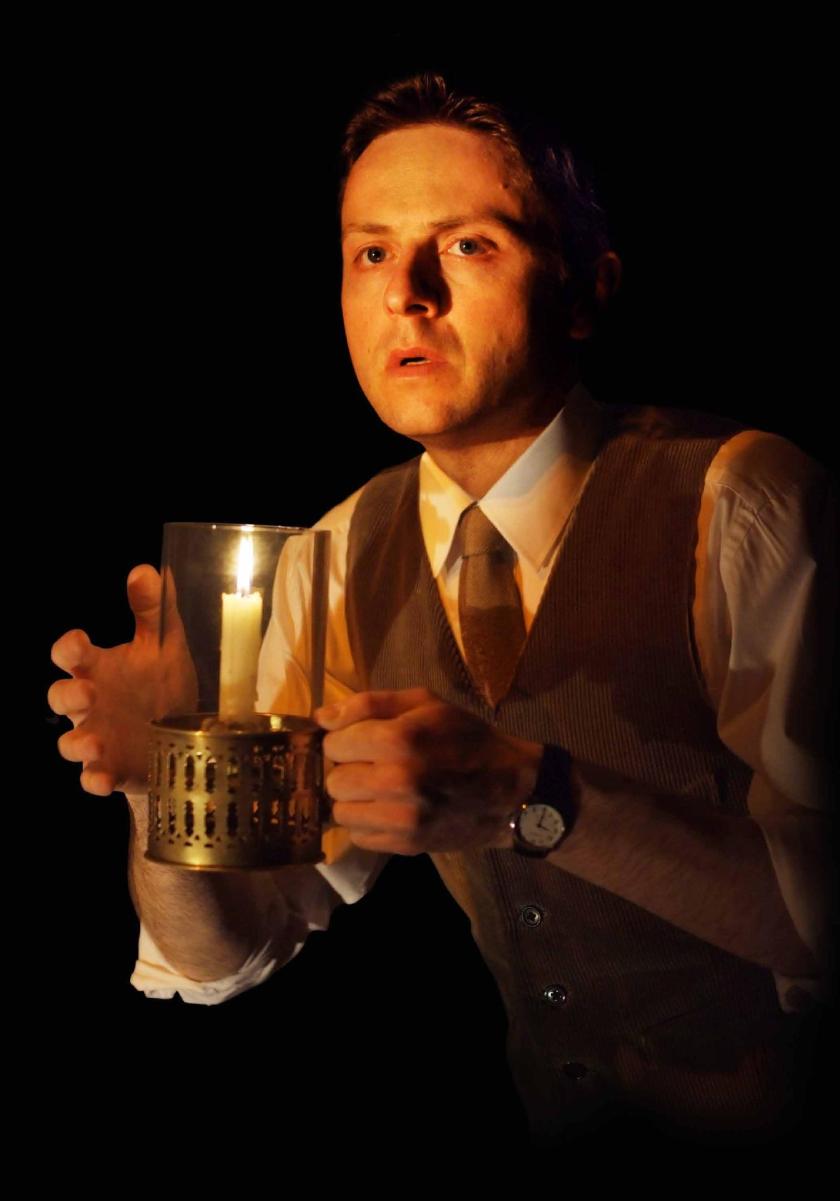A good ghost story never ends. Its twirling impetus sets a narrative top in motion that continues to spin indefinitely in the mind, propelled by the force of a listener’s imagination. As good ghost stories go, The Woman in Black is among the most insidious, having reduced audiences of metropolitan adults to whimpering, night-light clutching infants since 1987. With a young pretender – Jeremy Dyson and Andy Nyman’s Ghost Stories – now installed in the West End, it seems a good time to return to this dusty fixture of London theatre, and discover whether the sunken-eyed, white-faced woman in black still holds her power to terrify.
A good ghost story never ends. Its twirling impetus sets a narrative top in motion that continues to spin indefinitely in the mind, propelled by the force of a listener’s imagination. As good ghost stories go, The Woman in Black is among the most insidious, having reduced audiences of metropolitan adults to whimpering, night-light clutching infants since 1987. With a young pretender – Jeremy Dyson and Andy Nyman’s Ghost Stories – now installed in the West End, it seems a good time to return to this dusty fixture of London theatre, and discover whether the sunken-eyed, white-faced woman in black still holds her power to terrify.
“I will be obliged if you can tell me how to represent a pony and trap on this stage,” Michael Mears’s suspicious theatrical layman requests of The Actor (Orlando Wells). It’s a good question, and one that Robin Herford’s production answers in pleasingly simple fashion. Two actors, a large wicker hamper, a couple of overcoats and a projector – these are the unprepossessing sum of The Woman in Black’s theatrical parts. There are no pyrotechnic effects, no complex trickery; the mysteries and illusions of the play take place in plain sight, the more disturbing for their artless simplicity.
Adapted from Susan Hill’s novel with ingenious efficiency by Stephen Mallatratt, the play takes a lengthy story with a large cast and distils it into an elegant theatrical two-hander, all the while adding an entirely new level of allusive complexity to the plot – no mean feat for a show that clocks in at under two hours.
By placing the tale within a meta-theatrical frame, Mallatratt makes a virtue of his economic staging – drawing deliberate attention to the makeshift nature of his props and effects, and thus rendering their limitations all but invisible for the rest of the play. Rather than attempt a poor imitation of cinematic verisimilitude, he exploits the tools of immediacy and atmosphere that only the theatre can truly provide.
Delighting in the oldest of theatrical devices, the play takes its time. The story is initially slow to advance, provoking a meticulously fostered sense of impatience among the audience. Suspense sequences are long, with one in particular (involving – it’s not too revealing to state – the most chilling rocking chair since Psycho) lasting a thigh-clutchingly silent five minutes – an age in thriller-time.
Now on the 29th partnership since the show’s opening, the weight of the play is carried by its two actors. With the easier task is Orlando Wells, in the role of our solicitor hero. Youthful and declamatory, he charts a convincing course from ambitious cosmopolitan cynic to broken-down believer. His performative delivery is in deliberate contrast to the fluid, naturalistic shiftings of Michael Mears, whose implausibly mobile features inhabit the other assorted roles of the drama. Most touching however are his appearances as the elderly Arthur Kipps, which have a fragility that lingers long in the mind.
Above all this is a play about storytelling. The telling of the Woman in Black’s legend is no simple act of narration, but one of exorcism. Such is the power of a tale told fully that Kipps (and, by extension, his audience) must believe that it can lay a malevolent ghost to rest. Mallatratt treats the conventions of his chosen genre – the isolated house, the locked room, the mysterious woman – with light-handed reverence, never slipping into the easy irony or explicit gesture that would muddy the pure suggestive tension of the piece.
Towards the very end of the evening, as the action reached its devastatingly sudden climax, a small voice from behind us could be heard whispering urgently, “Mummy, I’m scared.” There wasn’t an adult in the room who didn’t know exactly how he felt.
- The Woman in Black is playing at the Fortune Theatre in perpetuity














Add comment